Menu
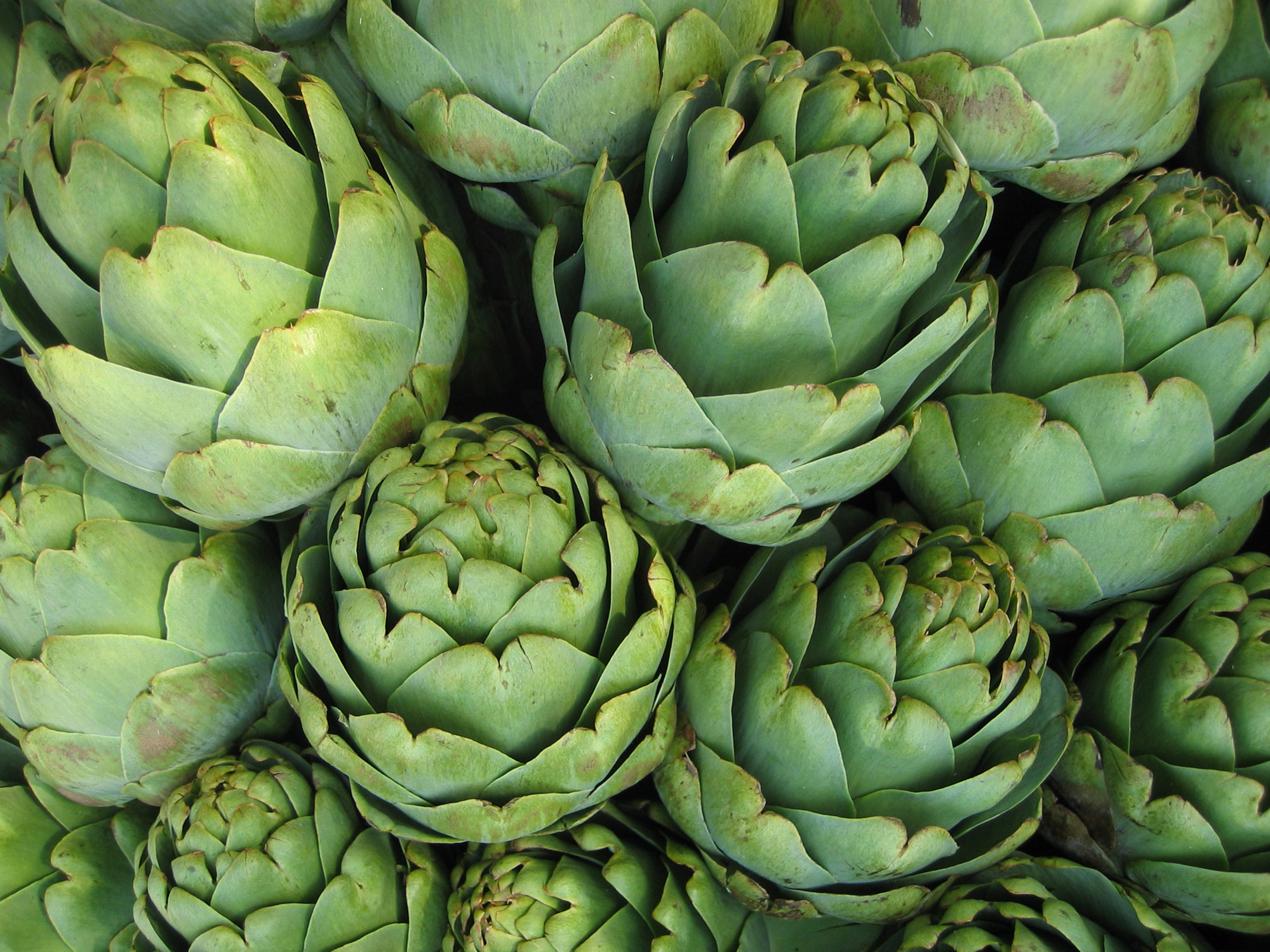

Welcome! We know you’ll agree that an artichoke is an unusual vegetable. We hope you’ll enjoy learning a little about how artichokes are grown commercially.
Virtually 100 percent of all artichokes grown in the U.S. come from California. As commodities go, when compared to items like corn, wheat and rice, artichokes are a minor crop. Total crop value for the 2007-2008 crop year was more than $50 million. Average production for the past 5 years has been over 4 million cartons.

The California Artichoke Advisory Board office is located in Castroville, Calif., the self-proclaimed “Artichoke Center of the World”, and home to the Castoville Artichoke Festival that began in 1959.

Nearly two-thirds of the State’s crop come from the fog-shrouded fields surrounding the town. The moderate climate of the central coast of California, characterized by cool summers and mild winters, is an ideal growing area.

The artichoke is in the thistle group of the sunflower family and can be grown as a perennial or annual. In full growth, the plant spreads to about 6 feet in diameter and about 3 to 4 feet high. It has long arching leaves that give the plant a fern-like appearance.
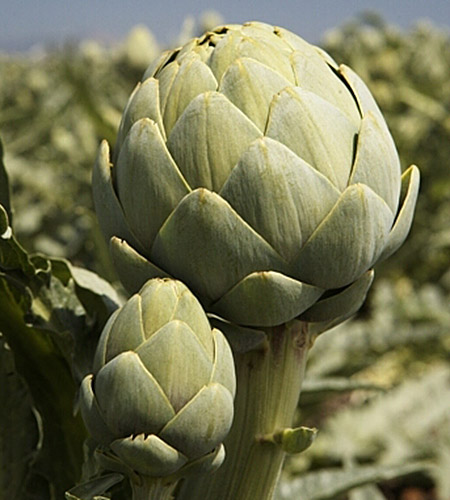
The Green Globe cultivar comprises the majority of plants in commercial cultivation near Castroville. The vegetable that we eat is really the plant’s immature flower bud. Buds appear on the new shoots. The size of the bud is determined by the height of the stalk and the bud’s position on the stalk. The largest buds grow at the top end. Mediums grow from side shoots. The smallest, or “babies” grow at the juncture of leaf to stem, hidden away in the morass of leaves.

If left to flower, blossoms measure up to 7 inches in diameter and are a beautiful violet color. Generally, our growers never allow their plants to flower, as this weakens the plant. A flower means that an edible bud was not marketed.
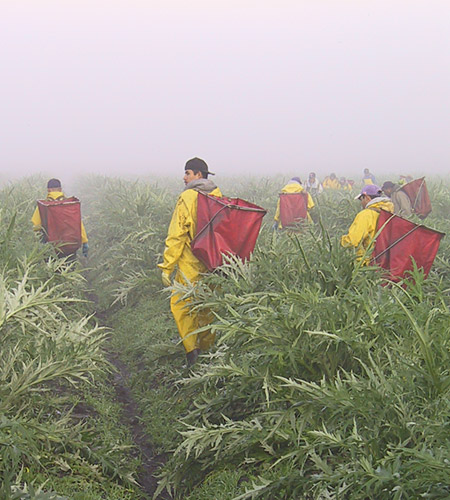
Harvesting artichokes is very labor-intensive work. The crews walk quickly through the artichoke rows choosing the ripe artichokes and cutting them from the stalks with a special knife.
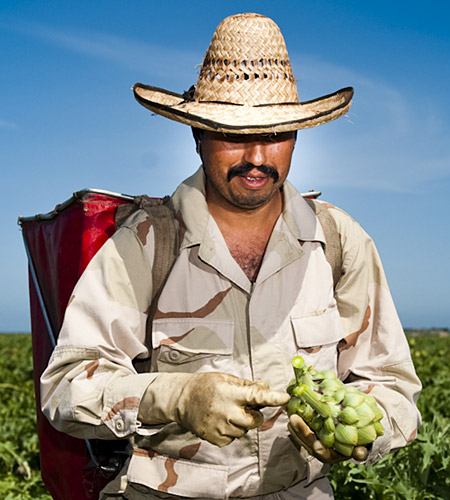
This picture shows a worker wielding a short artichoke knife in each hand — after cutting the artichoke, it is “tossed” in the wink of an eye into the “canasta” or basket on his back.

When full, the picking basket can weigh up to 80 pounds.

Most artichoke growers pack in the field. Eliminating the packing shed process prevents a lot of handling that contributes to bruised product. Large harvesting rigs are parked at the end of the artichoke rows. As the pickers come to the machine, they trade their full baskets for an empty one and start down a row again. The machines are specially made to pack artichokes with a station for each size of artichoke to be packed.

At the front of the operation, baskets are emptied onto a belt and the first culling of unacceptable artichokes takes place. The remainder of the artichokes start their run down the belt.
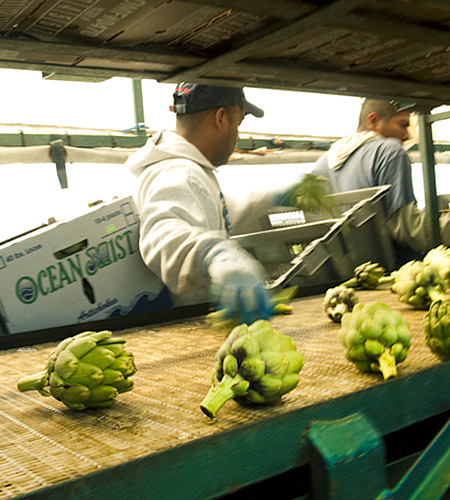
The conveyor belt carries the artichokes past the packers. Each packer is assigned a particular size artichoke to pack. He chooses his artichokes and the rest go on to the next packer until all the sizes are chosen.

Except for specialty packs, artichokes are packed into standard waxed cartons according to size. The most popular sizes range from 18 jumbo to a carton, all the way to petite 72’s to a carton.

The sized, packed artichokes are now palletized and placed on trailers, ready to be picked up and taken to the nearby cooler.
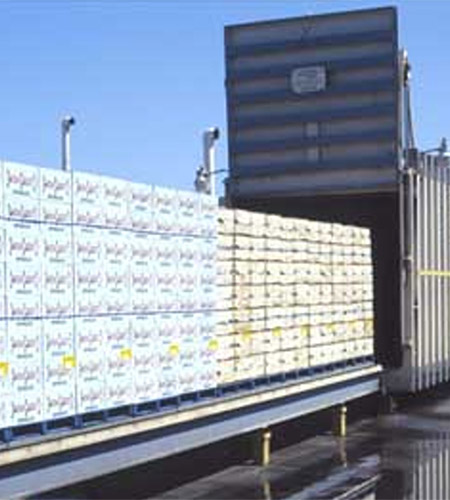
The packed artichoke pallets are rolled into a large machine called a hydro vacuum tube. The doors of the tube are closed and a vacuum is created. This removes the heat from the artichokes quickly and very cold water is rinsed over the artichokes. A process that used to take a day in the packing shed is reduced to an hour.
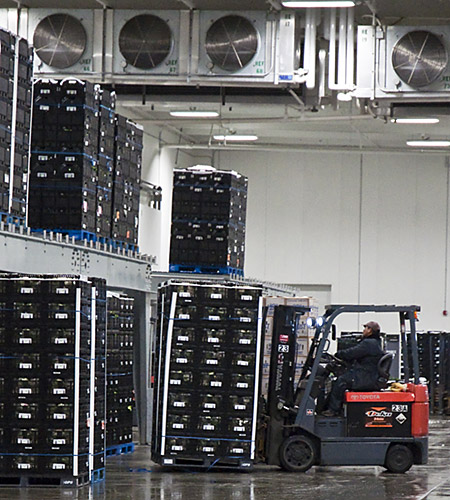
The cooled, rinsed artichokes are ready to be fork-lifted to the cooler where they await refrigerated trucks to deliver them to your friendly local grocer or wholesaler.